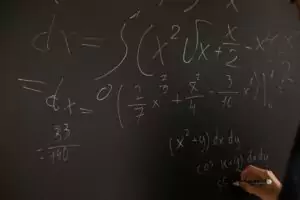Polynomials are essential mathematical expressions with multiple terms, often used to represent various mathematical relationships. To simplify these complex expressions, mathematicians employ various methods, and one powerful technique is Factor by Grouping. In this article, we will delve into Factor by Grouping, exploring its methods, examples, and its significance in algebra.

✅ AI Essay Writer ✅ AI Detector ✅ Plagchecker ✅ Paraphraser
✅ Summarizer ✅ Citation Generator
Before we dive into Factor by Grouping, let’s establish a solid understanding of polynomials. A polynomial is an algebraic expression comprising one or more terms, with each term consisting of a constant and a variable. These polynomials come in various forms, including binomials, trinomials, and quadrinomials, depending on the number of terms.
The Basics of Factoring Polynomials
Factoring polynomials is akin to the reverse operation of multiplication, as it involves breaking down a polynomial into its constituent factors. This process is essential in algebra because it helps find the roots or solutions of an expression.
In mathematics, several methods are available to factor polynomials, such as the Greatest Common Factor (GCF) method, the Sum or Difference of Two Cubes method, the Difference of Two Squares method, and the Trinomial method.
Factor by Grouping: The Concept
Factor by grouping is particularly useful when there is no common factor among the terms of a polynomial. This method involves splitting the expression into two pairs and factoring each of them separately. Let’s dive into the details.
Factoring Trinomials by Grouping
To illustrate factor by grouping, let’s focus on factoring a trinomial of the form ax^2 + bx + c. The steps are as follows:
- Find the product of the leading coefficient a and the constant c, denoted as ac.
- Next, look for the factors of ac that add up to the coefficient b. Rewrite bx as a sum or difference of these factors.
- Now, factor by grouping:⟹ ax^2 + bx + c = ax^2 + (a + c) x + c⟹ ax^2 + ax + cx + c
- Finally, factor out common terms:⟹ ax (x + 1) + c (x + 1)⟹ (ax + c) (x + 1)
This process simplifies the trinomial into its factored form.
Examples of Factor by Grouping
Let’s explore some examples to reinforce our understanding of factor by grouping.
Example 1: Factoring x^2 – 15x + 50
To factor x^2 – 15x + 50, we find two numbers whose sum is -15 and product is 50. These numbers are -5 and -10. We rewrite the given polynomial as:
x^2 – 5x – 10x + 50
Now, we factorize each set of groups:
x(x – 5) – 10(x – 5)
This further simplifies to:
(x – 5)(x – 10)
Example 2: Factoring 6y^2 + 11y + 4 by Grouping
In this example, we factor 6y^2 + 11y + 4 by grouping. We rewrite the expression as:
6y^2 + 3y + y + 4
Then, we factor out common terms:
(6y^2 + 3y) + (y + 4)
Now, we factor each group:
3y(2y + 1) + 4(2y + 1)
This leads us to the factored form:
(2y + 1)(3y + 4)
Factor by Grouping: Binomials and Beyond
Factor by Grouping isn’t limited to trinomials; it can also be applied to binomials. Binomials are expressions with two terms combined by either addition or subtraction signs. Here are some rules for factoring binomials:
ab + ac = a(b + c)
a^2 – b^2 = (a – b)(a + b)
a^3 – b^3 = (a – b)(a^2 + ab + b^2)
a^3 + b^3 = (a + b)(a^2 – ab + b^2)
Factoring Polynomials by Grouping: Step by Step
Now, let’s outline the step-by-step process for factoring a polynomial by grouping:
- Check whether the terms of the polynomial have the Greatest Common Factor (GCF). If so, factor it out and include it in your final answer.
- Break up the polynomial into sets of two.
- Factor out the GCF of each set.
- Determine if the remaining expressions can be factored any further.
Conclusion
Factor by Grouping is a valuable technique in algebra for simplifying complex polynomials, whether they are trinomials or binomials. By breaking down these expressions into manageable parts, mathematicians can more easily manipulate them, find solutions, and gain deeper insights into mathematical relationships. Understanding Factor by Grouping and its various applications is a fundamental step in mastering algebra.
So, the next time you encounter a challenging polynomial, remember the power of factor by grouping to simplify and conquer it.
Follow us on Reddit for more insights and updates.





Comments (0)
Welcome to A*Help comments!
We’re all about debate and discussion at A*Help.
We value the diverse opinions of users, so you may find points of view that you don’t agree with. And that’s cool. However, there are certain things we’re not OK with: attempts to manipulate our data in any way, for example, or the posting of discriminative, offensive, hateful, or disparaging material.